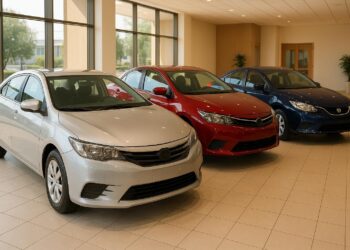With fuel prices exceeding KSh 200 per liter, finding a fuel-efficient car is essential for saving money in Kenya. Here’s a quick guide to the best options:
- Toyota Aqua Hybrid: Up to 35.4 km/L. Price: KSh 700,000–1.9M. Ideal for city driving with low maintenance costs.
- Mitsubishi Mirage: Up to 27.2 km/L. Price: KSh 800,000–1.2M. Affordable and efficient but less powerful.
- Suzuki Alto: Up to 27 km/L (hybrid). Price: KSh 380,000–790,000. Compact and budget-friendly for city use.
- Mazda Demio Diesel: Up to 26.4 km/L. Price: KSh 850,000–4.9M. Great for highways but higher maintenance.
- Nissan March: Up to 24 km/L. Price: KSh 400,000–2.52M. Reliable for urban driving.
- Toyota Vitz: Up to 35 km/L (hybrid). Price: KSh 500,000–2.0M. Low maintenance and versatile.
- Honda Fit Hybrid: Up to 36.4 km/L. Price: KSh 900,000–3.2M. Highly efficient but higher upfront cost.
Quick Comparison Table
| Car Model | Fuel Efficiency (km/L) | Price Range (KES) | Best For |
|---|---|---|---|
| Toyota Aqua Hybrid | 35.4 | 700,000–1.9M | City driving, low emissions |
| Mitsubishi Mirage | 27.2 | 800,000–1.2M | Budget-friendly commuting |
| Suzuki Alto | 27 (hybrid) | 380,000–790,000 | Urban use, tight budgets |
| Mazda Demio Diesel | 26.4 | 850,000–4.9M | Highways, torque needs |
| Nissan March | 24 | 400,000–2.52M | Urban driving, reliability |
| Toyota Vitz | 35 (hybrid) | 500,000–2.0M | Versatility, low maintenance |
| Honda Fit Hybrid | 36.4 | 900,000–3.2M | Efficiency, long distances |
Tip: For budgets under KSh 600,000, consider the Suzuki Alto or Nissan March. For better fuel savings, hybrids like the Toyota Aqua or Honda Fit Hybrid are excellent long-term investments. Choose based on your driving needs and road conditions.
5 MOST FUEL EFFICIENT CARS IN KENYA UNDER KSH 1.5M
1. Toyota Aqua Hybrid
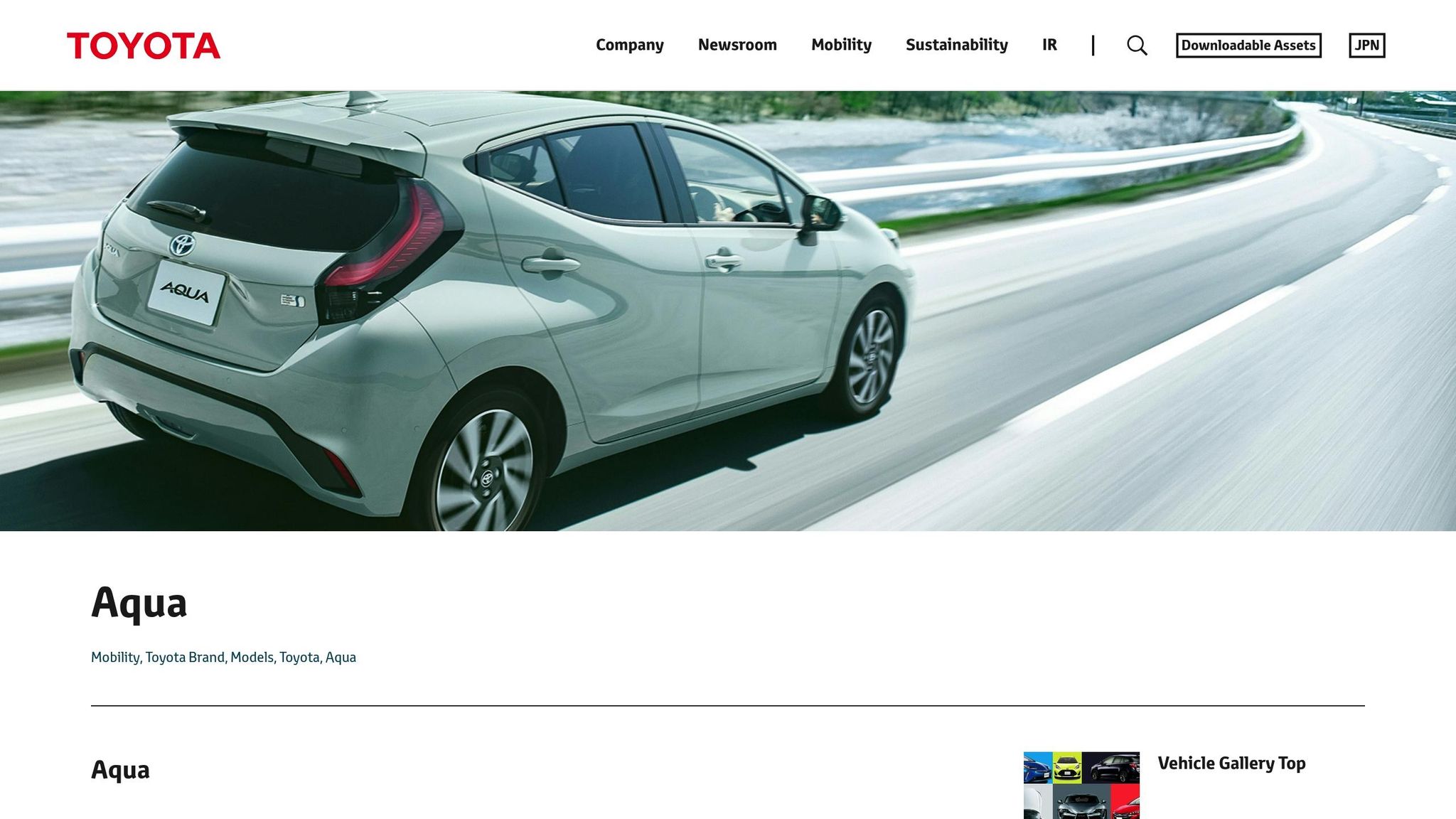
The Toyota Aqua Hybrid stands out as a fuel-efficient choice for Kenyan drivers. This compact hybrid hatchback has become a favorite in Kenya’s used car market, offering an excellent option for daily commutes.
Fuel Efficiency (km/L)
When it comes to fuel economy, the Aqua Hybrid delivers impressive numbers. It typically achieves between 25–30 km/L, and under optimal conditions, it can reach up to 35.4 km/L. This translates to an average consumption of just 3.1 liters per 100 kilometers, nearly doubling the efficiency of standard petrol cars. With its 36-liter fuel tank, the Aqua can cover over 1,000 kilometers on a single fill-up.
Price Range (KES)
The cost of the Aqua Hybrid varies depending on the model year:
- 2012–2013 models: KSh 700,000–KSh 1.0 million
- 2014–2017 models: KSh 1.0–KSh 1.5 million
- 2018–2023 models: KSh 1.5–KSh 1.9 million
Brand-new units start at around KSh 2.5 million.
Maintenance Costs
Toyota’s reputation for reliability, combined with its widespread service network in Kenya, ensures that maintenance costs remain manageable.
Suitability for Kenyan Roads
The Aqua Hybrid’s compact design and efficient hybrid engine make it a great fit for Kenya’s roads. It excels in city traffic, achieving 2.86 liters per 100 kilometers, and performs even better on highways at 2.50 liters per 100 kilometers. Plus, its reduced carbon emissions make it an environmentally friendly option. These features make the Aqua Hybrid a benchmark for fuel efficiency and cost-effectiveness in Kenya.
2. Mitsubishi Mirage
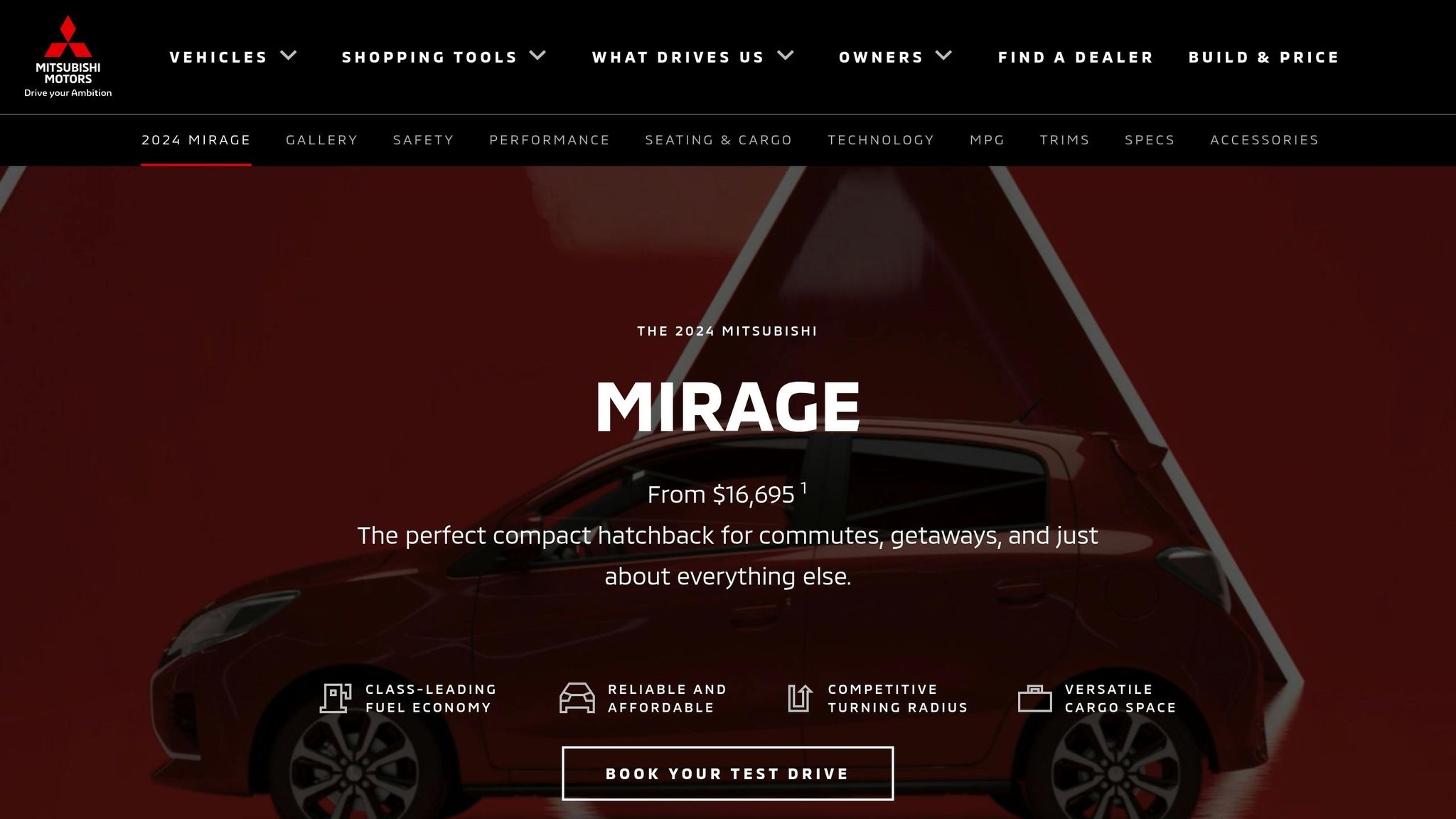
The Mitsubishi Mirage offers a blend of fuel efficiency and affordability, making it a practical choice for many Kenyan drivers. Its lightweight build and compact design are well-suited for a variety of road conditions.
Fuel Efficiency (km/L)
The Mirage boasts an impressive official fuel efficiency rating of 27.2 km/L, with real-world performance typically ranging between 20 and 24 km/L. Powered by a 1.0L engine delivering 68 horsepower, its lightweight structure ensures it outperforms competitors like the Mazda Demio (21 km/L) and Honda Insight (23 km/L). This makes it a cost-effective option for daily use.
Price Range (KES)
In Kenya, the Mirage comes with a range of price points depending on the model year:
- 2016 models: KSh 800,000 – KSh 1,100,000
- 2017 models: KSh 930,000 – KSh 1,280,000
- 2018 models: KSh 999,999 – KSh 1,100,000
- 2019 models: KSh 1,199,999
For those considering direct imports, savings of up to KSh 500,000 compared to local prices are possible. However, don’t forget to account for import duties and logistical expenses.
Suitability for Kenyan Roads
With a ground clearance of 6.3 inches, the Mirage is equipped to handle Kenya’s varied road conditions, including rough patches and minor obstacles. That said, its 1.0L engine can feel underpowered on steep hills or when carrying a full load. Additionally, some drivers have noted that its handling isn’t as smooth as other vehicles in its price category. Even with these minor drawbacks, the Mirage remains a solid choice for daily commuting, thanks to its efficiency and practical design.
3. Suzuki Alto
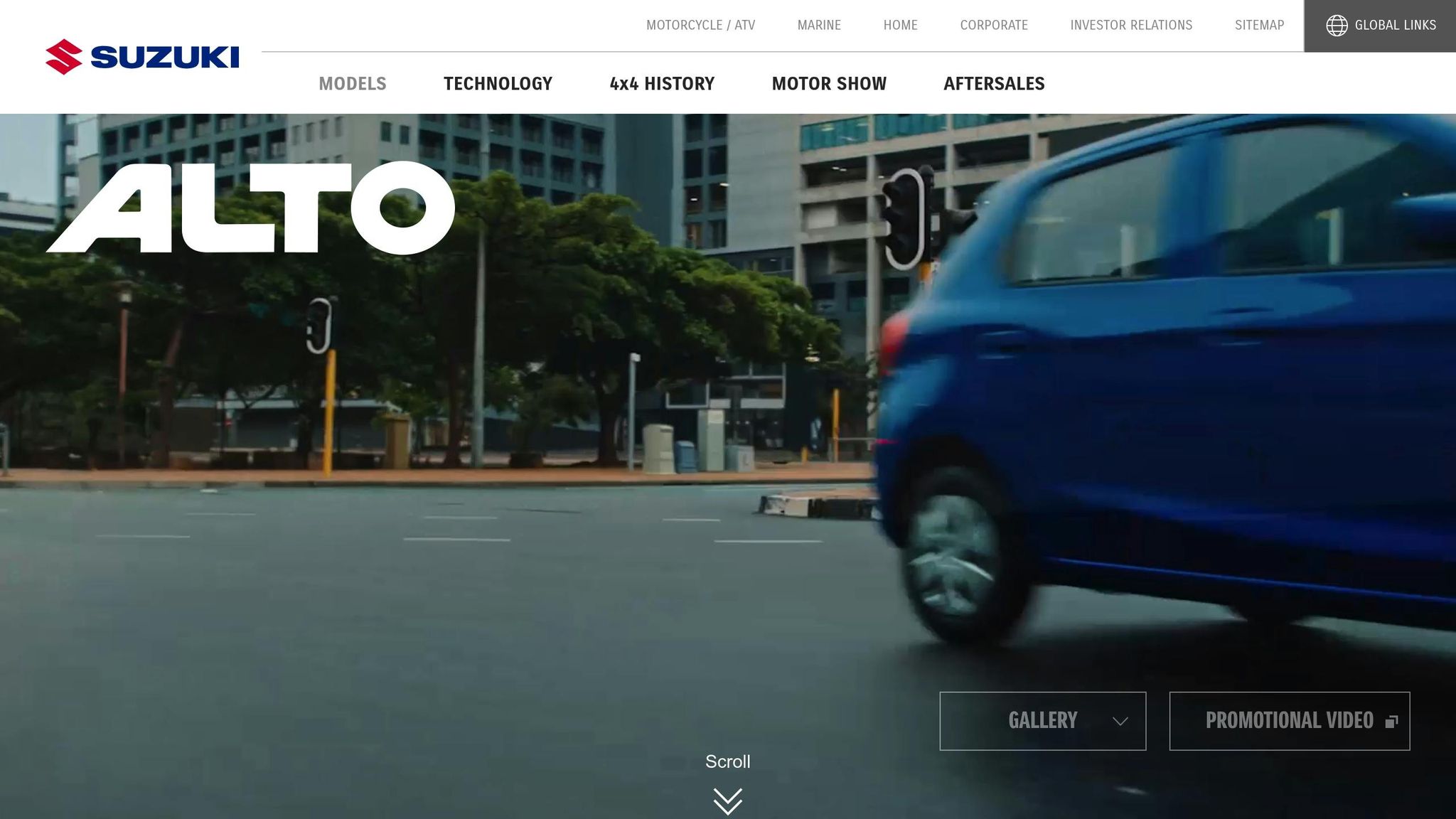
The Suzuki Alto is a practical choice for urban drivers in Kenya, combining affordability with impressive efficiency. As the country’s most budget-friendly city car, it stands out for its low fuel consumption and minimal running costs, making it perfect for daily commutes.
Fuel Efficiency (km/L)
The Suzuki Alto is a champion of fuel economy. The 650cc model delivers 18 km/L in city driving and 22 km/L on highways. If you opt for the mild hybrid version, you can expect an even better performance of around 27 km/L. To put it into perspective, over three years, you’ll spend approximately KSh 108,000 on fuel, compared to KSh 180,000 for the Toyota Vitz and KSh 135,000 for the Mira G4.
Price Range (KES)
The Alto’s pricing is another reason it appeals to budget-conscious buyers. Here’s a breakdown:
- Used models (2015–2017): Starting at KSh 380,000
- Fresh imports: Between KSh 690,000 and KSh 790,000
- Locally used models: Ranging from KSh 450,000 to KSh 650,000
These prices make it an excellent option for first-time car owners or anyone looking for an economical ride.
Maintenance Costs
Keeping the Alto on the road won’t break the bank. Its service costs are 60% lower, and repairs are 40% cheaper than similar models, potentially saving up to KSh 214,000 over three years. Additionally, spare parts are both affordable and readily available across Kenya, further reducing maintenance hassles.
Suitability for Kenyan Roads
The Alto truly shines in urban settings. Its compact size makes it perfect for navigating congested streets and squeezing into tight parking spaces, especially in busy cities like Nairobi. In fact, it’s 40 cm shorter than the Toyota Vitz, giving it a clear edge in maneuverability. However, its front-wheel drive and modest 600–800cc engine mean it’s best suited for smooth, paved roads and highways. It’s not the car you’d want to take on rough or hilly terrain.
For city dwellers looking for an affordable, efficient, and easy-to-maintain car, the Suzuki Alto is hard to beat.
4. Mazda Demio Diesel
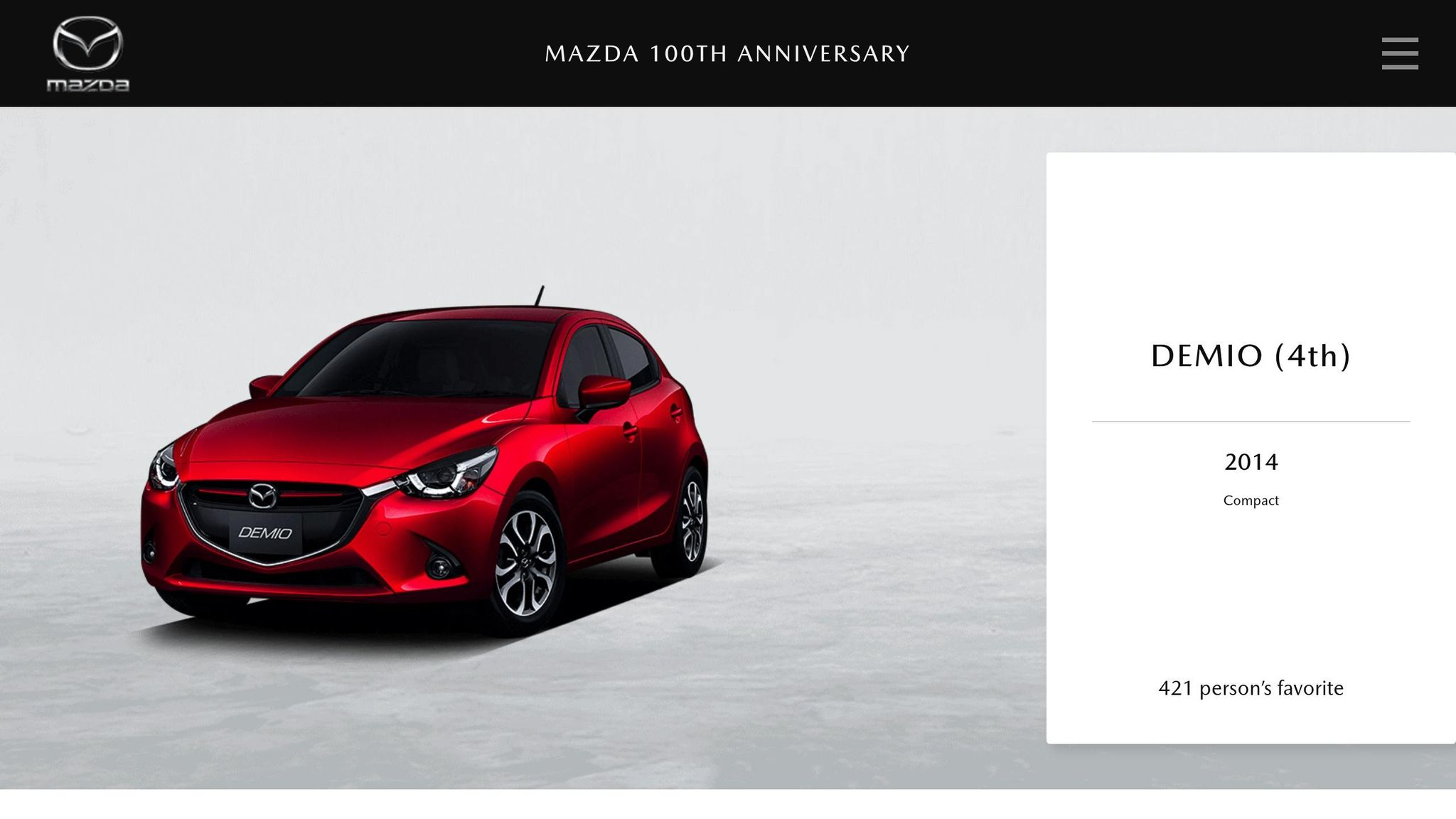
The Mazda Demio Diesel has become a favorite among Kenyan drivers, especially those in the ride-hailing business. Its practical design and reliable diesel engine make it a solid choice for city and highway use.
Fuel Efficiency (km/L)
When it comes to fuel economy, the Mazda Demio Diesel stands out. The 1300cc engine achieves an impressive 25 km/L, while the 1500cc version offers 18 km/L. The XD Touring L Package takes it a step further, delivering 26.4 km/L under JC08 tests. Thanks to its i-Stop technology, which shuts off the engine during idle periods, fuel consumption is reduced to just 4.9L per 100 km.
These fuel-saving features make the Demio Diesel a practical and economical choice for various budgets.
Price Range (KES)
The pricing of the Mazda Demio Diesel varies based on the model year and condition:
- Used models (2018–2020): Range from KSh 1.4 million to KSh 1.9 million.
- Older versions: Start at around KSh 980,000.
- Japanese imports: Begin at KSh 850,000.
- New 2024+ models: Cost between KSh 3.5 million and KSh 4.9 million.
For buyers needing financing, NCBA Bank offers options that cover up to 70% of the purchase price.
Suitability for Kenyan Roads
The Mazda Demio Diesel combines efficiency and affordability with features that cater to urban and highway driving in Kenya. Its rigid body shell handles harsh conditions well, and the car’s stability, precise steering, and advanced handling technologies – like electronic brakeforce distribution, traction control, and G-Vectoring control – make it a pleasure to drive in cities.
However, the car’s ground clearance of 5.7 inches limits its performance on rough terrain. While it thrives on city streets and well-maintained highways, it’s not the best option for off-road adventures.
5. Nissan March
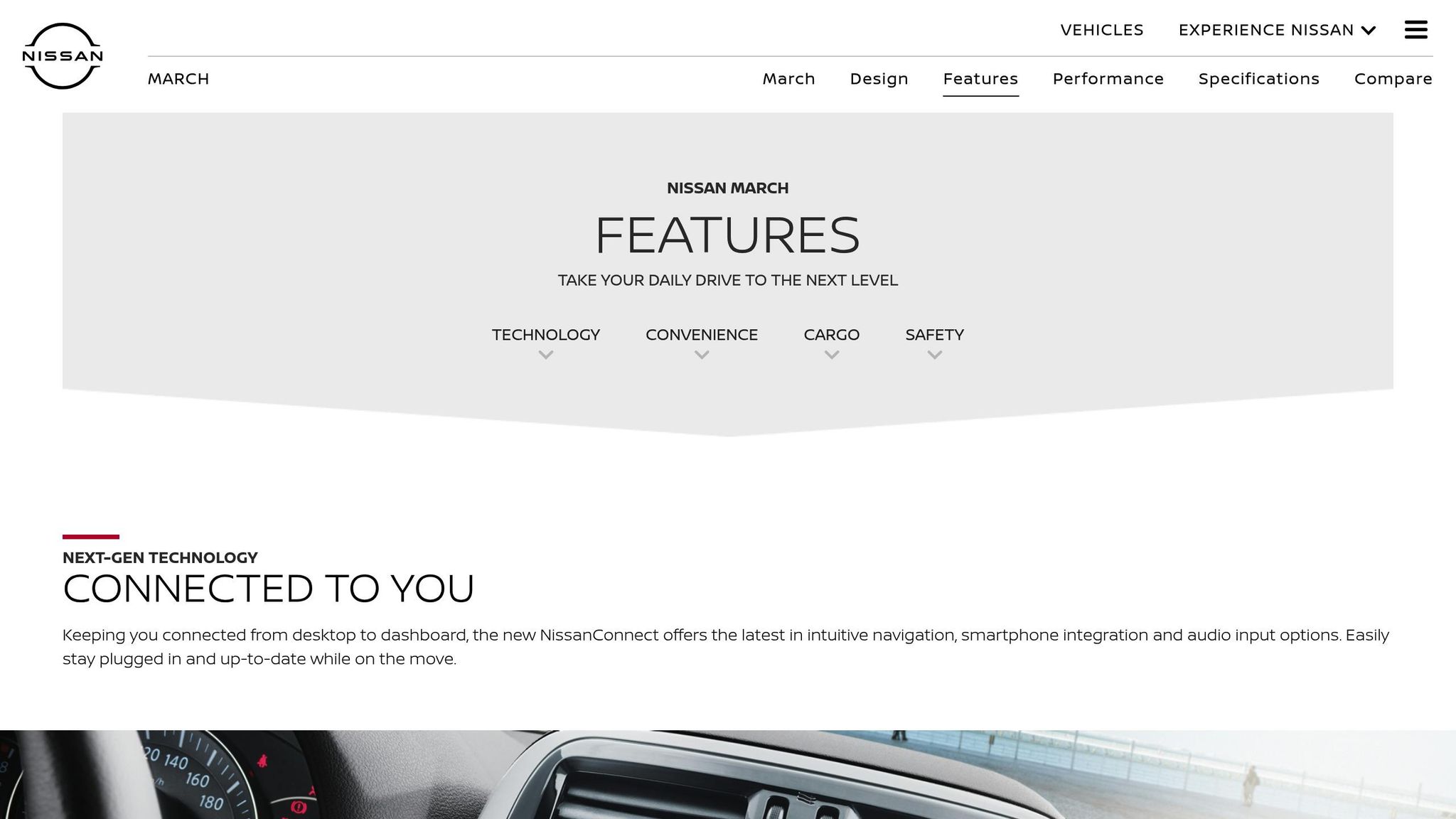
The Nissan March is a dependable subcompact hatchback that combines affordability with impressive fuel efficiency, making it a solid choice for urban driving in Kenya. Let’s take a closer look at its fuel performance, pricing, and how it handles Kenyan roads.
Fuel Efficiency (km/L)
The Nissan March offers excellent fuel economy across its variants. For the 2019 models:
- 1.0L Petrol: Around 23.0 km/L under standard conditions, with potential to reach 24 km/L in optimal settings.
- 1.2L Petrol: Delivers approximately 20.8 km/L.
- 1.5L Diesel: Achieves about 19.8 km/L.
On well-maintained roads, drivers can consistently expect around 23 km/L, making it a cost-effective option for daily commutes.
Price Range (KES)
The price of a Nissan March depends on the model year and whether it’s purchased new or used. Here’s a breakdown of recent pricing:
- 2017 Model: KSh 1.31 million
- 2018 Model: KSh 1.78 million
- 2019 Model: KSh 2.12 million
- 2020 Model: KSh 2.38 million
- 2021 Model: KSh 2.52 million
New models generally cost between KSh 2.0 million and KSh 3.0 million. For those on a tighter budget, used models are available for as low as KSh 400,000 to KSh 700,000. Interestingly, importing a Nissan March can save up to 20% compared to local showroom prices.
Suitability for Kenyan Roads
The Nissan March shines in urban environments, thanks to its compact size and excellent fuel efficiency. Its low ground clearance makes it easy to maneuver through city streets but may pose challenges on rougher terrains. However, its front-wheel-drive system ensures smooth handling and reliable navigation in most urban settings.
sbb-itb-e5ed0ed
6. Toyota Vitz
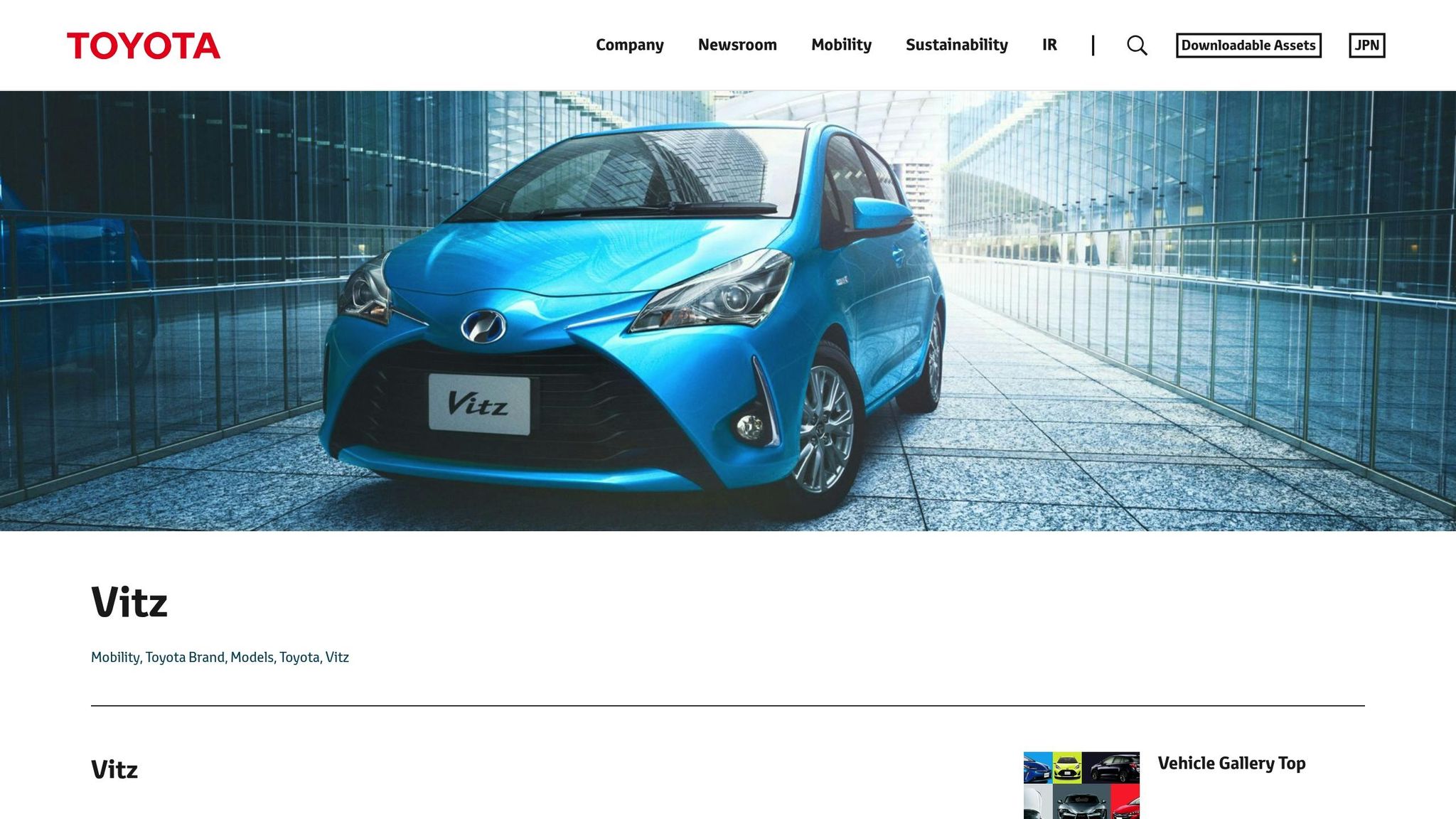
The Toyota Vitz is a dependable and fuel-efficient subcompact hatchback, popular among drivers looking for a budget-friendly car that’s easy to maintain and perfect for city driving.
Fuel Efficiency (km/L)
The fuel efficiency of the Toyota Vitz varies depending on the engine type. The 1.0L engine typically achieves 25–35 km/L under ideal conditions, but in everyday driving, the 1.0L and 1.3L variants usually deliver between 18–22 km/L. The Vitz XR AMT averages around 23.8 km/L, while hybrid models can reach an impressive 33–34 km/L on highways. Under Japanese testing standards, the 1.3L gasoline Vitz achieved 26.5 km/L on the MLIT 10–15 test cycle and 21.8 km/L on the JC08 test cycle.
Price Range (KES)
The Toyota Vitz offers a range of options to suit different budgets. For used models from 2008 to 2014, prices typically fall between KES 500,000 and KES 900,000. Newer models from 2015 to 2020 are priced higher, ranging from KES 750,000 to KES 1.3 million. Hybrid versions are generally in the KES 1.2 million to KES 1.8 million range, while imports from 2017 to 2021 can cost between KES 1.3 million and KES 2.0 million. Most Vitz models, however, are priced within the KES 600,000 to KES 1.2 million range, making them an affordable option for many buyers.
Maintenance Costs
One of the Vitz’s biggest advantages is its low maintenance costs. Toyota’s extensive service network and the availability of spare parts make repairs and upkeep straightforward and affordable over time.
Suitability for Kenyan Roads
The Toyota Vitz is designed with urban driving in mind. Its compact size and excellent turning radius make it a breeze to navigate through Kenya’s busy city streets. However, with a ground clearance of 150 mm, it’s better suited for smooth, paved roads rather than rough or uneven rural terrains.
7. Honda Fit Hybrid

The Honda Fit Hybrid is a sporty and efficient subcompact hatchback that has earned its place on Kenyan roads. Combining advanced hybrid technology with practicality, it’s a favorite among drivers looking for a balance between performance and fuel economy.
Fuel Efficiency (km/L)
The Honda Fit Hybrid features an Intelligent Dual Clutch Drive system that pairs a petrol engine with an electric motor, working seamlessly through a 7-speed dual-clutch transmission. This setup delivers an impressive fuel efficiency of up to 36.4 km/L under Japanese JC08 testing standards and 22–25 km/L in typical Kenyan driving conditions. With a combined output of 135HP (109HP from the petrol engine and an extra 30HP from the electric motor), it offers both power and efficiency – perfect for those who want performance without sacrificing fuel savings.
Price Range (KES)
The Honda Fit Hybrid is available at various price points depending on the model year and condition. Used models generally range from KES 900,000 to KES 1,695,000, while newer versions are priced between KES 2.2 million and KES 3.2 million. For example, a 2016 model is listed at KES 1,350,000, and another is priced at KES 1,569,999.
Maintenance Costs
Keeping the Honda Fit Hybrid in top shape is relatively affordable. Known for its reliability, the car requires only routine maintenance. Honda’s extensive service network in Kenya ensures that spare parts and repairs remain accessible and reasonably priced. Additionally, the hybrid system reduces strain on the petrol engine during city driving, which helps lower long-term maintenance and running costs.
Suitability for Kenyan Roads
The compact size of the Honda Fit Hybrid makes it a great choice for navigating congested urban areas. It handles stop-and-go traffic with ease, making it ideal for city driving. However, its low ground clearance may pose challenges on rough or unpaved roads. For those driving in dusty or misty regions, the car’s fog lights enhance visibility. Thanks to its aerodynamic design and lightweight materials, the Honda Fit Hybrid also maximizes fuel efficiency on smoother roads.
Advantages and Disadvantages
Every fuel-efficient car in Kenya brings its own mix of benefits and challenges. Weighing these trade-offs is crucial when deciding which vehicle suits your needs.
Hybrid vehicles – such as the Toyota Aqua and Honda Fit Hybrid – stand out for their impressive fuel efficiency and lower emissions. However, they come with a higher purchase price and require specialized maintenance. On the bright side, Toyota hybrids benefit from easily accessible spare parts in Kenya, and both Toyota and Lexus hybrids tend to retain their value better than many other brands.
Conventional petrol cars, like the Mitsubishi Mirage, Suzuki Alto, Nissan March, and Toyota Vitz, are more budget-friendly when it comes to both upfront costs and maintenance. However, they don’t match the fuel efficiency of hybrids. For example, the Mitsubishi Mirage boasts a fuel efficiency rating of 27.2 km/L and can be purchased for around KES 900,000 for a pre-owned import from Japan. If you’re looking for something even cheaper, used models range from KES 400,000 to KES 700,000, making it one of the most affordable options available.
Diesel cars offer strong torque and decent fuel economy but come with higher maintenance expenses and environmental concerns. For instance, the Mazda Demio Diesel delivers a fuel consumption rate of approximately 14 km/L, which is respectable but falls short compared to hybrids.
Here’s a quick comparison of key models:
| Car Model | Fuel Efficiency | Key Advantages | Main Disadvantages |
|---|---|---|---|
| Toyota Aqua Hybrid | 35.4 km/L | Outstanding fuel efficiency; reliable brand | High upfront cost; specialized maintenance |
| Mitsubishi Mirage | 27.2 km/L | Good fuel economy; affordable maintenance | Limited power; basic features |
| Suzuki Alto | N/A | Very affordable; compact size | Basic interior; limited safety features |
| Mazda Demio Diesel | 14 km/L | Strong torque; solid build quality | Higher maintenance costs; diesel emissions |
| Nissan March | 21 km/L | Affordable; reliable | Basic features; average fuel economy |
| Toyota Vitz | N/A | Reliable brand; good resale value | Moderate fuel efficiency |
| Honda Fit Hybrid | 36.4 km/L | Excellent fuel economy; sporty design | High cost; low ground clearance |
Performance and maintenance also depend on where you’ll be driving. Compact cars, like the Honda Fit and Nissan March, are ideal for city traffic but may struggle on rougher terrain due to their lower ground clearance. The Honda Fit, for instance, is a top choice for urban drivers thanks to its fuel efficiency, affordable upkeep, and spacious cargo area.
Since over 90% of cars on East African roads are pre-owned imports, inspecting a vehicle’s history and condition is vital. Toyota’s extensive service network provides an edge for easy maintenance, while other brands may require visits to specialized service centers – especially hybrids, which need technicians skilled in handling dual powertrains.
Ultimately, your choice should balance factors like purchase price, fuel efficiency, maintenance needs, and the type of driving you’ll do. If your focus is city driving with occasional highway trips, hybrids offer excellent long-term value despite their higher upfront costs. Meanwhile, conventional petrol models like the Nissan March or Toyota Vitz are dependable options for those prioritizing a lower initial investment.
Conclusion
Choosing the right fuel-efficient car means aligning your budget with your driving needs. Striking a balance between affordability and efficiency is key to making a smart choice.
If your budget is under KSh 600,000, the Suzuki Alto is a top contender. It’s a great fit for quick school runs or navigating tight city streets, thanks to its compact size and excellent fuel economy. The Nissan March is another standout in this range, offering impressive fuel savings and easy handling – perfect for new drivers.
For mid-range budgets between KSh 600,000 and KSh 1,000,000, options like the Toyota Vitz and Mitsubishi Mirage shine. The Vitz is known for its reliability and Toyota’s extensive service network, making maintenance a breeze. Meanwhile, the Mitsubishi Mirage impresses with its efficiency, delivering 27.2 km/L and available as a pre-owned Japanese import for around KSh 900,000.
If you’re ready to invest in a higher-end option, hybrids like the Toyota Aqua (35.4 km/L) and Honda Fit Hybrid (36.4 km/L) are excellent choices. These models are ideal for drivers covering long distances daily, where the fuel savings quickly outweigh the higher upfront cost.
City drivers will appreciate compact models like the Honda Fit Hybrid or Nissan March for their maneuverability and efficiency. On the other hand, if your routes often include rougher roads, consider vehicles with higher ground clearance. And remember, new cars typically lose about 30% of their value in the first year, making well-maintained used imports a financially savvy option.
Ultimately, weigh the upfront costs against long-term savings. Every option has its strengths, so choose a car that fits your driving habits and financial goals.
FAQs
What should I consider when buying a fuel-efficient car in Kenya?
When shopping for a fuel-efficient car in Kenya, it’s essential to align your choice with your specific needs. Think about the car’s size and purpose – smaller cars are often more fuel-efficient, making them ideal for drivers looking to cut costs. Another key factor is the engine size; smaller engines generally consume less fuel.
Take a close look at the car’s miles per gallon (MPG) rating to gauge its fuel consumption compared to other models. Hybrid cars are also a smart option, as they tend to use less fuel than traditional gasoline-powered vehicles. Beyond that, aspects like the car’s weight, aerodynamics, and whether you’ll be driving mostly in urban areas or on highways can make a noticeable difference in fuel efficiency.
Don’t forget to consider Kenya’s driving conditions. Factors like road quality and typical traffic patterns can affect how well a car performs. Choosing a vehicle that fits your budget and handles Kenya’s unique environment can lead to significant savings on fuel over time.
Are hybrid cars more expensive to maintain than traditional gas-powered cars in Kenya?
Hybrid cars in Kenya tend to have higher maintenance costs compared to traditional gas-powered vehicles. This is largely due to the advanced technology they rely on, which often requires specialized parts and technicians with specific expertise. For instance, replacing a hybrid battery can set you back more than 90,000 KSh, though routine maintenance costs are usually similar to those of gas-powered cars.
In contrast, conventional gas-powered vehicles are generally more affordable to maintain. Routine services typically fall between 5,000 KSh and 15,000 KSh, making them a more budget-friendly option for many drivers. While hybrids can help you save on fuel, their upkeep costs are something to carefully weigh if you’re watching your wallet.
What financing options are available for buying fuel-efficient cars in Kenya?
Financing Options for Buying a Fuel-Efficient Car in Kenya
If you’re considering purchasing a fuel-efficient car in Kenya, there are several ways to finance your dream. Many banks, including KCB and Equity Bank, provide car loans that can cover up to 90% of the vehicle’s price. These loans usually come with annual interest rates ranging from 13% to 20% and repayment terms stretching up to 60 months.
Another route to consider is logbook loans or financing through SACCOs (Savings and Credit Cooperative Organizations). These alternatives are widely favored for their flexible repayment plans, making them easier to manage. With these financing options, driving a fuel-efficient car becomes an achievable goal for those mindful of their budget.
Related posts
- Top Fuel-Efficient Cars for Long-Distance Drives in Kenya
- Top Fuel-Efficient Cars for Daily Commutes in Nairobi
- Best Fuel-Saving Vehicles for Everyday Driving Across Kenya
- Best used cars to buy in Kenya


